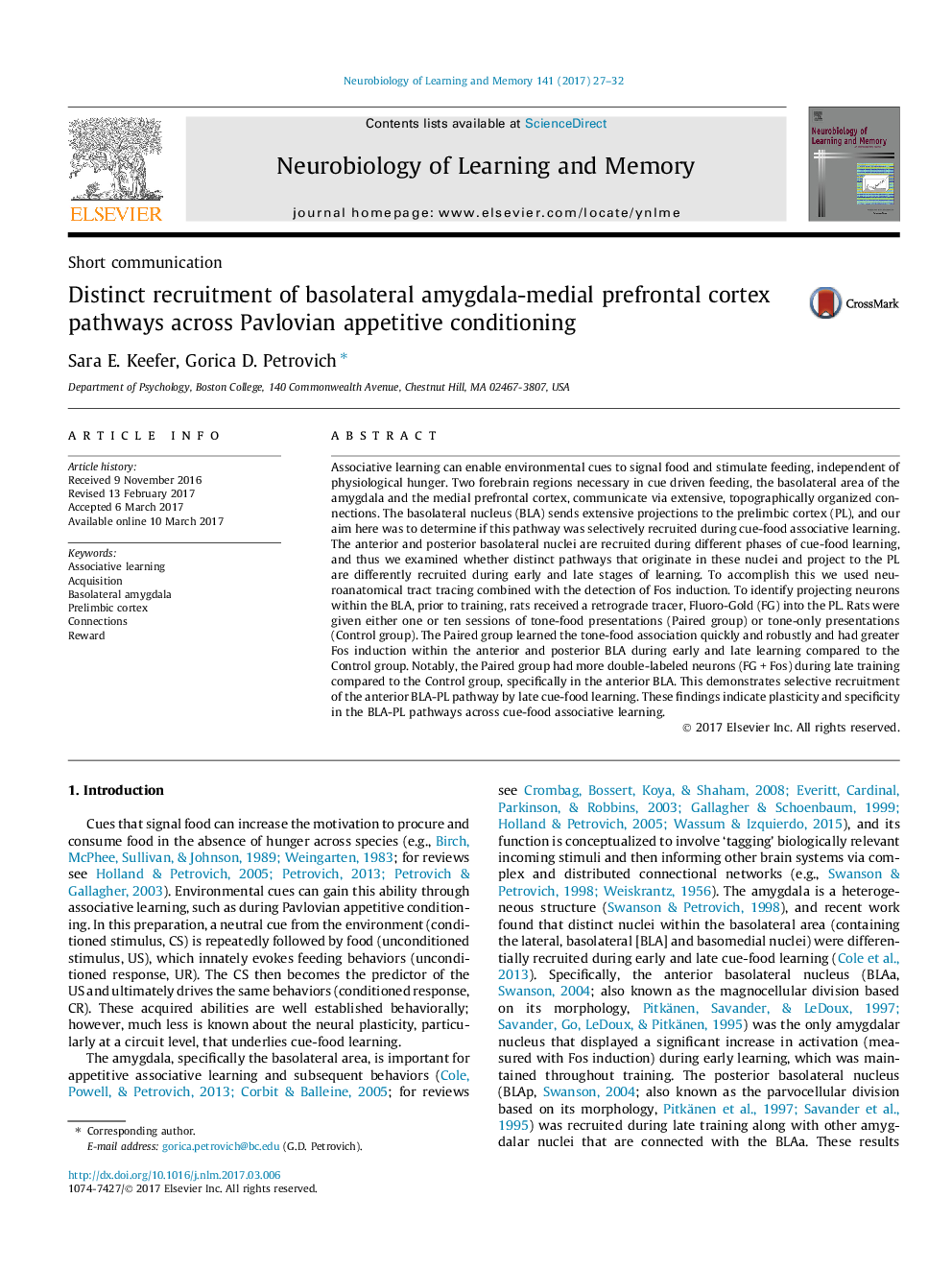| کد مقاله | کد نشریه | سال انتشار | مقاله انگلیسی | نسخه تمام متن |
|---|---|---|---|---|
| 5043186 | 1475133 | 2017 | 6 صفحه PDF | دانلود رایگان |
- Examined BLA-PL pathway activation during early and late cue-food learning.
- Identified activation of BLA-PL projecting neurons with a retrograde tracer and Fos.
- Determined BLA-PL pathways differently activated during early and late learning.
- Specifically the anterior BLA-PL pathway was recruited during late learning.
Associative learning can enable environmental cues to signal food and stimulate feeding, independent of physiological hunger. Two forebrain regions necessary in cue driven feeding, the basolateral area of the amygdala and the medial prefrontal cortex, communicate via extensive, topographically organized connections. The basolateral nucleus (BLA) sends extensive projections to the prelimbic cortex (PL), and our aim here was to determine if this pathway was selectively recruited during cue-food associative learning. The anterior and posterior basolateral nuclei are recruited during different phases of cue-food learning, and thus we examined whether distinct pathways that originate in these nuclei and project to the PL are differently recruited during early and late stages of learning. To accomplish this we used neuroanatomical tract tracing combined with the detection of Fos induction. To identify projecting neurons within the BLA, prior to training, rats received a retrograde tracer, Fluoro-Gold (FG) into the PL. Rats were given either one or ten sessions of tone-food presentations (Paired group) or tone-only presentations (Control group). The Paired group learned the tone-food association quickly and robustly and had greater Fos induction within the anterior and posterior BLA during early and late learning compared to the Control group. Notably, the Paired group had more double-labeled neurons (FG + Fos) during late training compared to the Control group, specifically in the anterior BLA. This demonstrates selective recruitment of the anterior BLA-PL pathway by late cue-food learning. These findings indicate plasticity and specificity in the BLA-PL pathways across cue-food associative learning.
Journal: Neurobiology of Learning and Memory - Volume 141, May 2017, Pages 27-32
